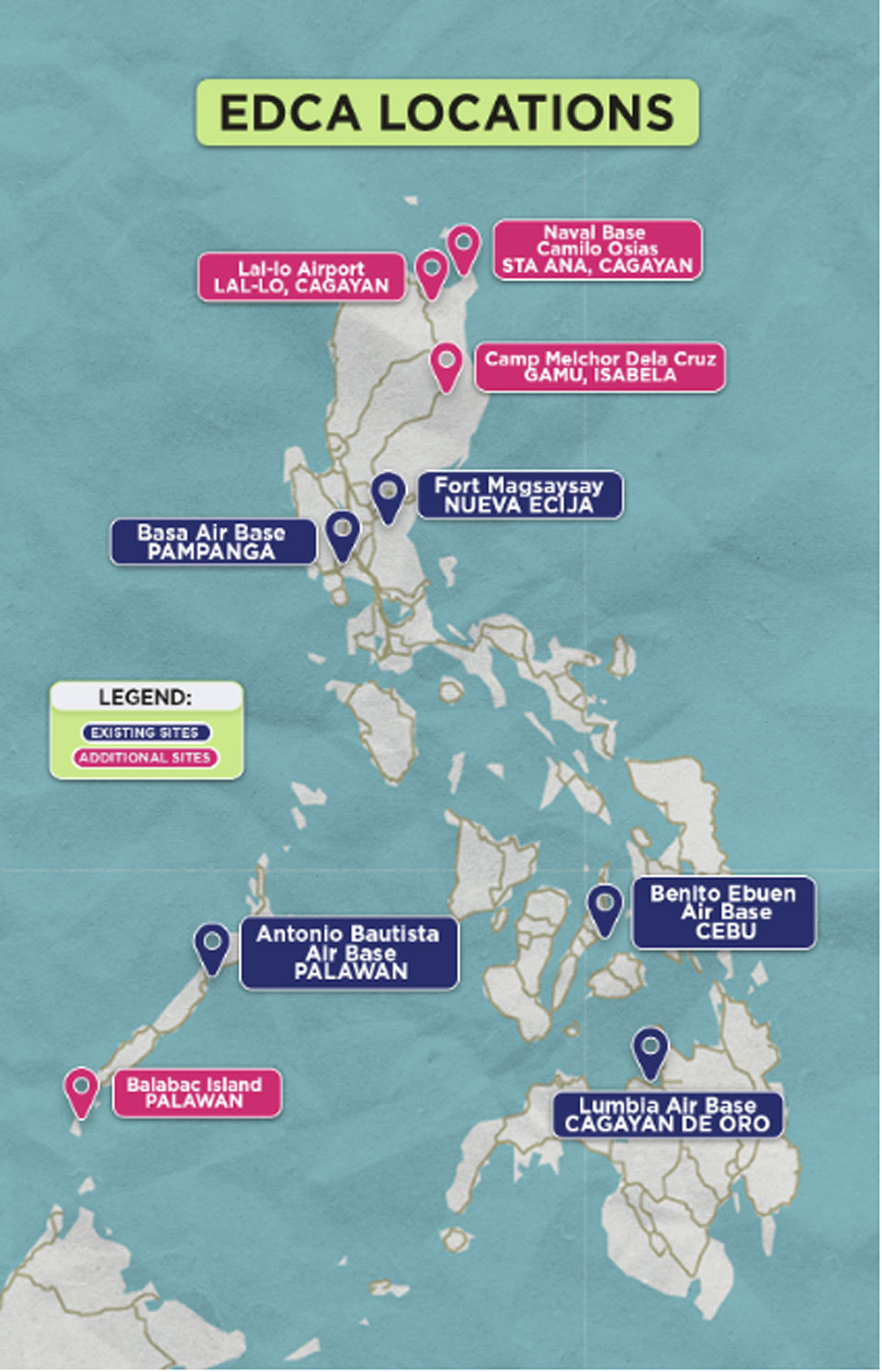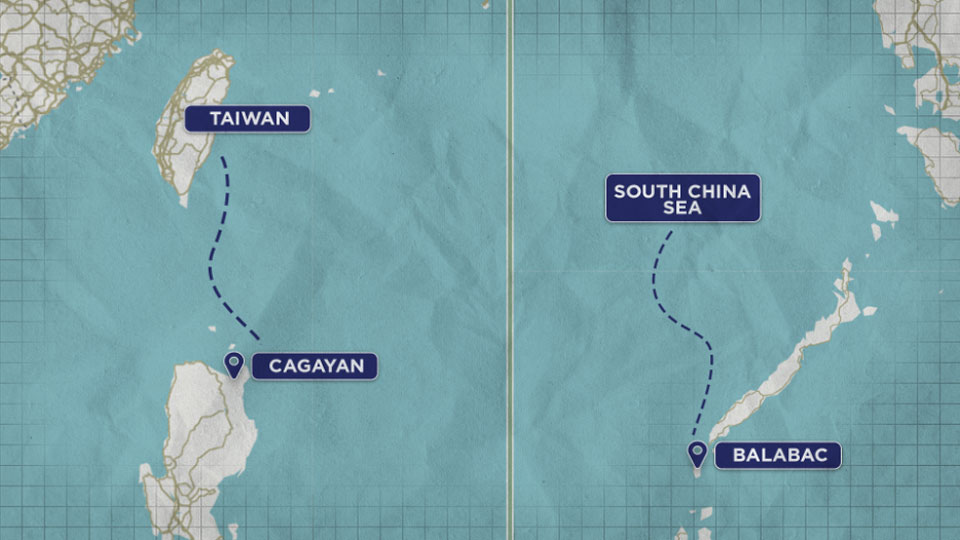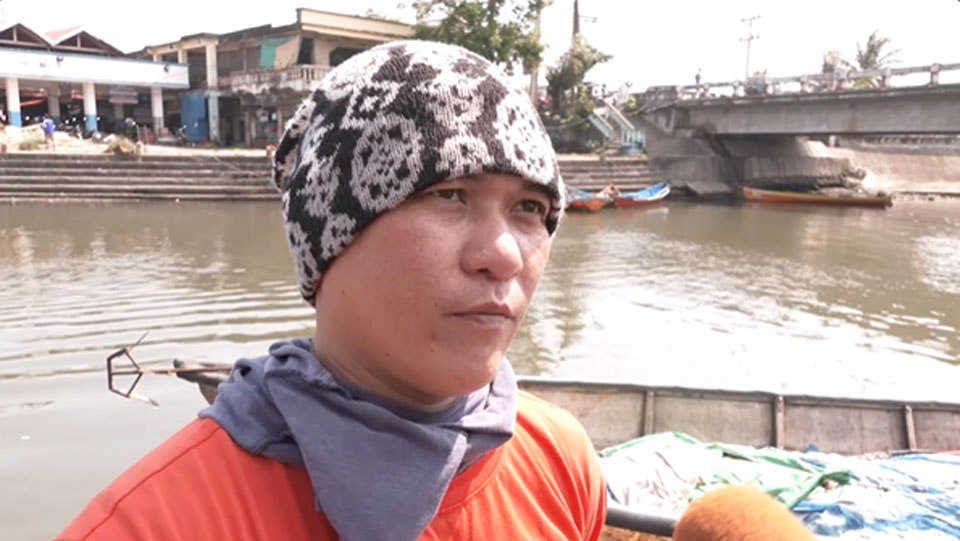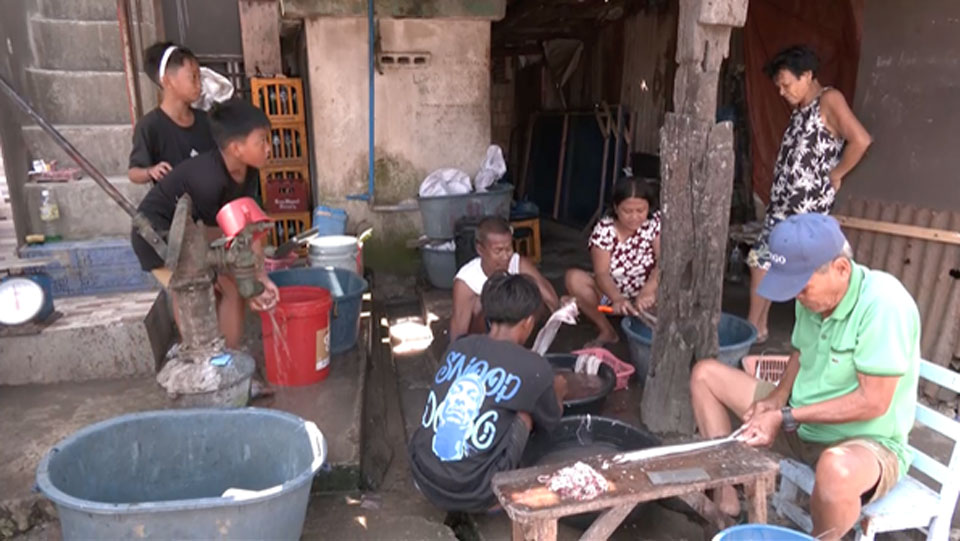EDCA expansion
On April 3, the Philippine government revealed four more locations — on top of five that are already in place — that will be used by the US military under a new deal based on the Enhanced Defense Cooperation Agreement (EDCA) of 2014.

The expansion of the defense pact is said to be paving the way for the largest US military footprint in the Philippines since 1991, when an agreement allowing Washington to maintain overseas bases there was terminated.
"EDCA was negotiated in the position of desperation" says geopolitical analyst Richard Heydarian, a senior lecturer at the Asian Center of the University of the Philippines, who says the military agreement was born out of the Philippines' need to protect its sovereignty against China's growing aggressiveness in the South China Sea.
Three years after US troops permanently left their overseas bases in Manila, China was reported to have installed its national flag in the Philippines-claimed Mischief Reef in the Spratly Islands. Armed Chinese ships also started to swarm the area.
The disputed waters are part of an important sea lane, so the Chinese military buildup has alarmed other Southeast Asian countries and superpowers like the US.
Over the years, the territorial dispute between China and Philippines has intensified. The two countries' 2012 stand-off over the Scarborough Shoal was the impetus for the EDCA. The Philippine government wanted to modernize and train its armed forces through the help of its allies, like the US.
The EDCA grants the Americans rotational access to military facilities nominated by the Philippine government. US forces are allowed to use runways, fuel storage, military housing and preposition weapon systems at the agreed sites.
Even after EDCA was signed in 2014, China carried on with the construction of artificial islands, runways and port facilities on reefs that are within the Philippines' Exclusive Economic Zone. The waters surrounding those reefs are frequented by Chinese ships.
Last November, Chinese coast guards forcibly seized rocket debris that the Philippine Navy was towing near the Manila-claimed Thitu Island. An aggressive encounter also took place in February when a Chinese vessel allegedly pointed lasers that caused temporary blindness among Philippine coast guards who were patrolling the disputed waters.
With the announcement of the EDCA expansion, the Philippine government notes in a statement it will further boost Manila's "capabilities to protect its national interests and contribute to collective defense in the region."
Meanwhile, the US government describes the updated agreement as a further commitment to the Philippines to ensure "a more peaceful, secure, and prosperous region."
"Proactive deterrence" against China
The new EDCA locations include a navy base, an army base and a civilian airport, all in the north of Luzon Island, in the provinces of Cagayan and Isabela — the closest to Taiwan, an island at the center of growing tensions between the US and China.
The remaining one lies on the southern tip of Palawan, bordered by the South China Sea in the area where Beijing has ramped up its maritime activities in recent years.

"The game here is really proactive deterrence," says Heydarian. "If there's sufficient American presence in the area, sufficient preparation by the Philippines, then China will never attack Taiwan."
Despite China's warning that the expanded EDCA deal will only put Manila in harm's way in relation to Taiwan, the US maintains the new locations allow a "seamless response to shared challenges in the Indo-Pacific Region."
Meanwhile, Philippine Defense Ministry Officer-in-Charge Carlito Galvez says the use of strategic locations reflects his government's responsibility to the international community to secure trade routes.
Civilian concerns
With tensions brewing overseas between China and countries like the US, Japan and Australia, some Philippine leaders are reluctant to support defense agreements with any affected nations.
"We will be the first to be attacked by the enemies of Japan, US and Australia, and not the enemy of the Philippines," warns Manuel Mamba, the Governor of Cagayan which hosts two of the four new sites.
He also fears that his plans to rehabilitate and reopen Cagayan's port to encourage economic ties with northern neighbors, including Taiwan, South Korea, Japan and China, may be scuttled.
Cagayan has a population of 1.2 million. Its citizens describe the province as a simple place where there are more fields than shopping malls. People are peaceful and content, living through farming and fishing.
Within fishing communities, enemy attacks are the last thing on people's minds. Their greatest fear lies in losing their livelihoods when US forces conduct activities in the Cagayan River and its surrounds.
"The waters will be chaotic," says 30-year-old fisherman Rexon Culling, who has relied on the river to feed his family for almost 15 years. "Many ships will be passing. There will be loud noise and the fish will be affected."

Rexon says he is scared that the rotational presence of US troops will drive Chinese investors away. The father of two says he is not afraid of war but he does worry about how military conflict will affect his children: "How will they grow up if war is their environment, if that is what they will see in our town?"

Rexon's neighbors are also worried. A 28-year-old fisherman fears his home is at risk. "This is our birthplace," he says. "We grew up here. We will be evicted from here, only for the interest of a few."
The fisherman also worries that the land where houses now stand will soon be taken over for military facilities.
If war does break out between China and the US, the fishers are convinced they will be forced to leave their jobs, and their once peaceful hometown, to find refuge somewhere else with very little government support.
Funding infrastructure projects
The US government will be allocating around 100-million dollars for infrastructure investments at the new and existing EDCA sites.
US Ambassador to the Philippines MaryKay Carlson says the EDCA "supports the local economy and creates jobs," noting that most of the budget allocation associated with it will go to Philippine companies.
Critics say that's not enough. They want a financial commitment to vulnerable Filipinos like Rexon, whose communities could be affected.
"There should be compensatory mechanisms to those who lose their livelihoods or the investments that will be forgone because of potential hysteria, or legitimate national security," notes analyst Heydarian.
"Our relationship with the US cannot just be a matter of military to military cooperation. It has to be comprehensive. So economics and investment treaty have to be part of that."
Watch video 0:30


